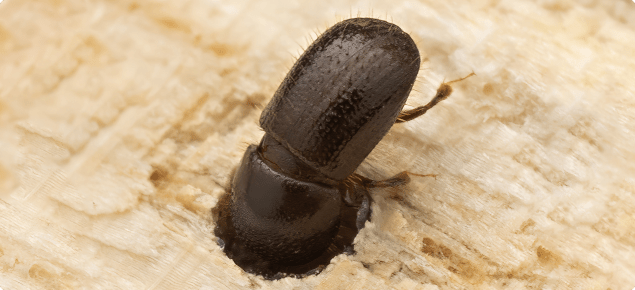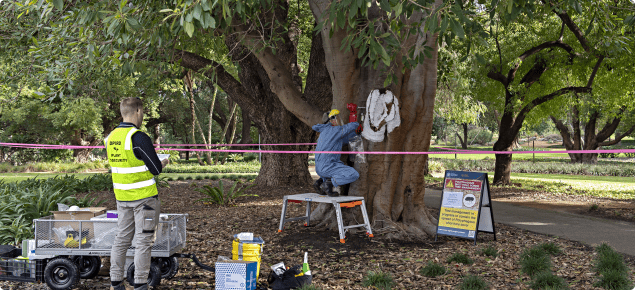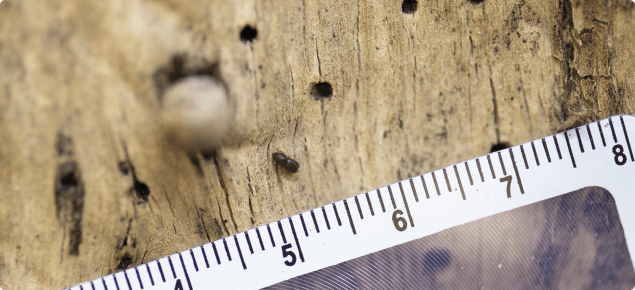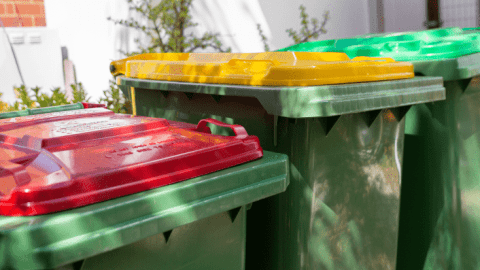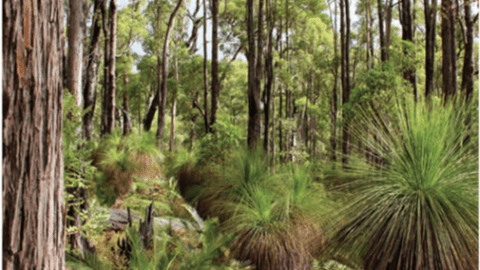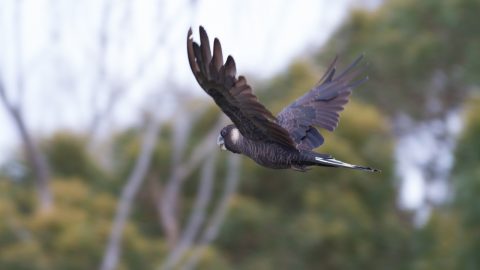In an announcement today, DPIRD – the Department of Primary Industries and Regional Development – has expanded the existing quarantine boundaries to deal with the destructive PSHB to include Armadale, Kwinana, Mundaring, Rockingham and Serpentine Jarrahdale.
This means the entire Perth metropolitan area – a total of 30 local governments, including Fremantle, East Fremantle, Melville and Cockburn, are within the Quarantine Area.
Here’s the Quarantine Area, which is divided into Quarantine Area A and Quarantine Area B.

DPIRD explains that expanding the Quarantine Area will help create a ‘buffer zone’ between areas with higher infestations of the borer and the remainder of the State. This expanded zone has fewer or no infested trees and heightened surveillance is underway to identify and quickly control new infestations.
PSHB has not been detected outside the Perth metropolitan area and trapping and monitoring is ongoing in key regional areas.
The expanded Perth metropolitan Quarantine Area is now divided into two zones, A and B, with rules applied to the movement of wood or plant materials out of each zone, to increase protection for Perth’s urban tree canopy.
The changes come into effect from tomorrow, Friday 6 September.
The quarantine measures are fundamental to the ongoing national eradication response managed by DPIRD.
Quarantine Area Zone A has higher numbers of infested trees and ongoing tree management works.
Residents in Zone A, that includes Fremantle, East Fremantle, Melville and Cockburn –
• cannot move untreated or unseasoned wood outside Zone A, unless chipped to pieces that are 2.5 cm or less in diameter;
• cannot move plant materials, including living plants, that are greater than 2cm in diameter outside Zone A;
• must ensure any machinery used to handle green waste is cleaned before it can be moved outside Zone A.
Zone B acts as a ‘buffer zone’ with fewer or no infested trees. DPIRD is undertaking increased surveillance in Zone B and will respond rapidly to any new detection in that area, as early detection is vital to the eradication effort.
Residents in Zone B:
• cannot move untreated or unseasoned wood outside the Quarantine Area, unless chipped to pieces that are 2.5 cm or less in diameter;
• cannot move plant materials, including living plants, that are greater than 2cm in diameter outside the Quarantine Area;
• can move wood or plant materials, including living plants, into Zone A;
• must ensure any machinery used to handle green waste is cleaned before it can be moved outside the Quarantine Area.
PSHB does not live, breed in or otherwise affect lawn clippings and grasses, so these can be disposed of as normal and with no restrictions.
Anyone who cannot meet the movement requirements must contact DPIRD to obtain a permit before moving restricted materials.
DPIRD Chief Plant Biosecurity Officer Vincent Lanoiselet said the response effort was covering all bases to contain the spread of PSHB and protect healthy trees within and beyond the metropolitan area.
“Expanding the Quarantine Area will provide an additional buffer zone where we are increasing surveillance for the borer and taking immediate action to manage the pest in this area,” Dr Lanoiselet said.
“Across the Perth metropolitan area, DPIRD officers have inspected more than 1.9 million trees on over 62,000 properties since the response started in 2021.”
Dr Lanoiselet thanked the Perth community and local governments for supporting the eradication response and doing their part to stop the borer spreading to healthy trees.
“As the weather warms, we urge everyone to check their trees for signs of the borer, particularly those host trees at highest risk such as box elder maples, coral trees, Moreton Bay and Port Jackson figs and London plane trees,” he said.
“Signs of borer activity include tiny holes the size of a ballpoint pen in the tree trunk or branches, staining or discolouration of the wood, gumming and frass, as well as signs of dieback in the tree.”
Any suspected signs of PSHB damage should be reported to department via the MyPestGuide Reporter App or via the Pest and Disease Information Service on 9368 3080 or by email to padis@dpird.wa.gov.au
We are told the MyPestGuide App is easy and fun to use. If you suspect a borer, you can photograph it with the App and send it straight in to DPIRD.
Also you should be aware that if you have a Acer negundo, or as it’s commonly known, a Box Elder Maple on your property you are obliged to let DPIRD know. This is the tree the borers just love. If a borer gets in, the sooner DPIRD can deal with it, the more likely it is you will be able to save your Maple.

Source DPIRD
For more information on expanded Quarantine Area and the zones visit this website .
~~~~~~~~~~~~~~~~~~~~~~~~~~~~~~~~
* If you’d like to COMMENT on this or any of our stories, don’t hesitate to email our Editor.
** WHILE YOU’RE HERE –
PLEASE HELP US TO GROW FREMANTLE SHIPPING NEWS
FSN is a reader-supported, volunteer-assisted online magazine all about Fremantle. Thanks for helping to keep FSN keeping on!
*** Don’t forget to SUBSCRIBE to receive your free copy of The Weekly Edition of the Shipping News each Friday!
